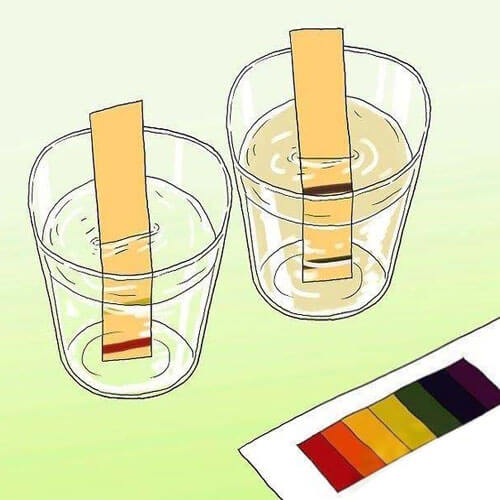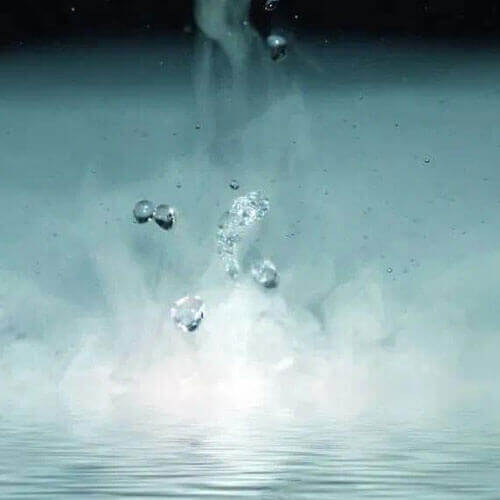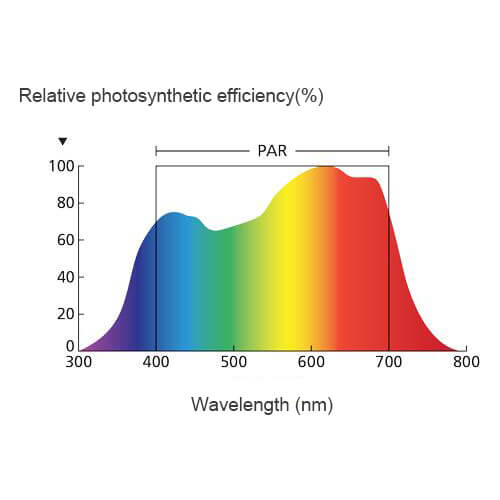What is Hydrology?
Hydrology refers to the various phenomena of water changes and movement in nature. It studies the formation, circulation, spatial and temporal distribution, as well as the chemical and physical properties of water on Earth. Hydrology provides scientific support for preventing and mitigating floods and droughts, as well as for the rational development and utilization of water resources.
How is Hydrological Data Collected?
Hydrological monitoring stations are the primary facilities for collecting hydrological data. These stations are set up in rivers, lakes, channels, and reservoirs to gather essential measurements, including water level, flow rate, sediment content, precipitation, ice conditions, evaporation, water temperature, water quality, soil moisture content, and groundwater levels.
What are the Four Types of Hydrology?
Hydrology initially focused on the study of rivers, lakes, marshes, glaciers, and snow accumulation. Later, it expanded to include groundwater, atmospheric water, and ocean water. Based on the research subject, hydrology is mainly classified into four categories: surface water hydrology, groundwater hydrology, snow and ice hydrology, wetland hydrology.
1. Surface water hydrology
Surface water hydrology is the study of the distribution, movement patterns, and interactions with the environment of liquid and solid water on the Earth’s surface, covering natural water bodies such as rivers, lakes, glaciers, and wetlands.
Applications: Commonly used in water resource management, flood control and disaster reduction, urban planning, ecological protection, and climate change research.
2. Groundwater hydrology
Groundwater hydrology focuses on the storage, movement, and interactions of groundwater with the geological environment. Its scope includes aquifer structures, groundwater circulation, water quality evolution, and geological effects caused by extraction. The core task of groundwater hydrology is to assess the sustainability of groundwater resources and address environmental issues such as pollution and land subsidence.
Applications: Widely used in water resource protection, groundwater pollution treatment, geological disaster prevention, geothermal energy development, and eco-hydrology research.
3. Snow and ice hydrology
Snow and ice hydrology specializes in studying the hydrological processes of glaciers, snow cover, and permafrost, including meltwater mechanisms, runoff contributions, and the feedback relationship between the cryosphere and climate. Research methods involve glacier mass balance monitoring, snow layer profile analysis, and permafrost thermodynamic modeling, focusing on unique hydrological phenomena in high-latitude and high-altitude regions, such as glacier surges and glacial lake outburst floods.
Applications: Used in water resource management in arid regions, disaster early warning, polar scientific exploration, and climate change studies.
4. Wetland hydrology
Wetland hydrology examines the hydrological changes in wetland ecosystems such as swamps, peatlands, and mangroves, including water level fluctuations, surface and groundwater exchanges, and vegetation-hydrology coupling mechanisms. Its core focus is to reveal the role of wetlands as the “kidneys of the Earth” in water purification, carbon storage, and biodiversity conservation while assessing the impacts of human activities (such as drainage and reclamation) on wetland degradation.
Applications: Used in ecological restoration projects, carbon sink management, flood regulation, and coastal zone protection.
Six Major Types of Hydrological Monitoring Data
Research in hydrology requires the collection of various types of data. The six commonly used types of data are water level, precipitation, flow rate, water quality, evaporation, and groundwater.
1. Water level monitoring
Common characteristic water levels in hydrology include:
- Rising water level: The lowest water level before the water rises in a flood event.
- Flood peak water level: The highest water level observed during a flood event.
- Warning water level: When the water level rises to a certain point, the flood control dikes may be at risk. At this level, flood prevention personnel should strengthen patrols, maintain a high level of defense, and be ready for emergency response. This is referred to as the warning water level.
- Safety water level: According to flood control dike design standards, the dikes should not collapse when the water level reaches this point. Sometimes, the historical highest water level is also considered the safety water level.
- Characteristic water levels of reservoirs include: dead water level, normal storage water level, flood control limitation water level, flood control high water level, design flood level, and check flood level.
Water level monitoring is one of the critical parameters in hydrology. Its dynamic changes directly impact flood and drought warnings and assessments. A water level monitoring system typically consists of water level sensors, data collection equipment, and a transmission system.
Water level sensors
- Radar-based water level gauge: Uses changes in the length of radar wave reflections to measure water levels. It has a simple structure and reliable measurements, widely used in environments such as rivers and lakes.
- Pressure-based water level sensor: Measures the pressure at the bottom of the water to estimate the water level. This type of gauge is suitable for various environments, especially in locations where float-based water level gauges cannot be installed.
- Ultrasonic water level gauge: Utilizes the speed of sound waves in air and the principle of reflection to measure water levels. This non-contact measurement method offers high accuracy and is easy to install.
Data collection equipment
- Data collection terminal: Responsible for receiving data from the water level sensors, processing it, and storing it. It can enable real-time data collection, remote transmission, and alarm functions.
- Data logger: Used to record water level data for subsequent analysis and processing. It can store large amounts of data and offers various data output options.
Transmission system
- Wired transmission: Connects the data collection equipment to the monitoring center via cables (such as RS485 wires) to transmit data. This transmission method is stable and reliable, but it requires cable installation, which can be costly.
- Wireless transmission: Uses wireless communication technologies (such as LoRa, Wi-Fi, etc.) to connect data collection equipment to the monitoring center. This transmission method is easy to install and cost-effective, but it may be affected by signal coverage and interference factors.
2. Precipitation monitoring
Precipitation monitoring is at the core of hydrology, as it impacts hydrological elements such as river water levels, groundwater levels, and river flow rates. Precipitation monitoring observes changes in rainfall amount and intensity over time, helping to understand the distribution of water. The main instrument for precipitation monitoring is the rain gauge, with common types including the tipping bucket rain gauge, optical rain gauge, and weighing rain gauge.
The tipping bucket rain gauge provides automatic measurements by recording the number of times the bucket tips, making it suitable for continuous, remote monitoring. The optical rain gauge provides high-precision measurements by analyzing the interference caused by raindrops on a light beam, allowing for detailed rainfall analysis. The siphon rain gauge uses the siphon principle to measure rainfall, making it suitable for heavy rain monitoring, though it requires regular maintenance.
3. Flow monitoring
Flow (m³/s) and flow velocity (m/s) monitoring are important hydrological data, influencing water resource allocation and hydropower generation. Flow is a key indicator of changes in water volume. There are several methods for flow monitoring:
Flow sensors
- Radar flow meter: Uses microwave radar technology to measure flow velocity and flow rate in open channels, rivers, or drainage systems. Since radar flow meters do not come into contact with water, they are particularly suitable for environments with flooding, polluted water, or high flow velocities.
- Ultrasonic flow meter: Measures flow velocity using the speed of sound waves in water and the principle of reflection. It has advantages such as non-contact measurement, high accuracy, and easy installation, allowing for real-time online monitoring.
Weir and flume method
- Rectangular weir (triangular weir): Calculates flow by measuring the head of water above the weir. This method is suitable for small flow measurements and provides high accuracy, though it requires the construction of a weir and flume, which can be costly.
- Bashforth flume: A commonly used flow measurement device that calculates flow by measuring the water level in the flume. It offers high measurement accuracy, a wide range of applications, and easy installation.
Hydraulic structure method
Utilizes the flow coefficient and water level difference of hydraulic structures, such as sluices and dams, to calculate flow. This method is suitable for rivers or channels with hydraulic structures, but requires accurate knowledge of the parameters and operational conditions of the hydraulic structures.
4. Water quality monitoring
In addition to monitoring water levels, flow velocity, and flow rate, hydrology also involves assessing the chemical, physical, and biological properties of water to ensure sustainable use of water resources and maintain the health of the ecological environment. Modern water quality monitoring systems can achieve automated monitoring of physical, chemical, and biological indicators of water.
Physical indicators monitoring
- Water temperature: Measured using water temperature sensors. Changes in water temperature have significant effects on the growth and reproduction of aquatic organisms and on the physical and chemical properties of water.
- Turbidity: Measured using turbidity sensors to detect the amount of suspended particles in water. High turbidity may indicate the presence of large amounts of sediment, organic matter, and other pollutants.
- Color: Measured with a colorimeter to detect the color of the water. The color of the water can reflect the presence of dissolved substances, suspended particles, and microorganisms.
Chemical indicators monitoring
- pH: Indicates the acidity or alkalinity of water, measured with a pH sensor. Changes in pH affect the living conditions of aquatic organisms and the chemical forms of substances in the water.
- Dissolved oxygen: The concentration of dissolved oxygen in water, measured with a dissolved oxygen sensor. Dissolved oxygen is essential for aquatic life, and its levels reflect the self-purification ability of the water.
- Chemical oxygen demand (COD): Reflects the content of organic matter in water. The higher the COD, the more serious the organic pollution. COD levels can be accurately measured using a COD sensor.
- Ammonia nitrogen, total phosphorus, total nitrogen, etc.: These indicators reflect the levels of nutrients in water. Excessive nutrients can lead to eutrophication and algal blooms. Related instruments include ammonia nitrogen sensors, residual chlorine sensors, chlorophyll sensors, and cyanobacteria sensors.
Biological indicators monitoring
- Plankton: Includes phytoplankton and zooplankton. These are important components of aquatic ecosystems, and changes in their species and numbers can indicate the ecological status of water.
- Benthos: Organisms living at the bottom of water bodies. Benthic organisms are sensitive to changes in the water environment, and shifts in their community structure can serve as indicators of water quality.
5. Evaporation monitoring
Evaporation is one of the important ways in which water is lost in nature and plays a crucial role in the water cycle. In hydrology, evaporation data is valuable for climate research, ecological protection, and agricultural irrigation. Evaporation monitoring systems are another important component of hydrology.
Evaporation monitoring systems can measure the evaporation rate from free water surfaces (such as lakes, reservoirs, and wetlands) and from the ground surface (such as soil evaporation and vegetation transpiration) in real-time. Traditional evaporation pans (such as the 20cm diameter Piche evaporimeter) provide basic evaporation data, while modern evaporation sensors use high-precision measurement units to continuously record evaporation and calculate the evaporation rate based on temperature, humidity, and wind speed.
Since the evaporation process is influenced by various factors, evaporation monitoring systems are typically equipped with supporting devices such as temperature and humidity sensors, wind speed and direction sensors, solar radiation sensors, atmospheric pressure sensors, and soil moisture sensors to provide comprehensive evaporation analysis data. For example, if wind speed increases by 1 m/s, evaporation may increase by 10%-30%, making wind speed data crucial for evaporation calculations.
Groundwater monitoring
Groundwater is a crucial component of the world’s freshwater resources, accounting for 30% of global freshwater reserves, second only to glaciers and polar ice caps. It serves as a vital source for agricultural irrigation, industrial production, and drinking water while playing a key role in ecological balance. In hydrological systems, groundwater monitoring data is essential for hydrological modeling and water resource management.
How does Hydrology Affect the Environment?
Water resource distribution
Precipitation and runoff determine the availability and distribution of water resources within a region, directly influencing soil moisture and vegetation growth. Sufficient water supply supports healthy ecosystems, whereas water scarcity or uneven distribution can lead to droughts, impact biodiversity, and disrupt ecological balance.
Floods and droughts
Instabilities or extreme variations in hydrological processes (such as heavy rainfall, floods, or prolonged droughts) have direct impacts on the environment and human societies. Floods can cause soil erosion, pollutant dispersion, and ecosystem damage, while droughts contribute to vegetation degradation, soil salinization, and water shortages.
Water quality and sedimentation
During runoff, water carries dissolved substances and suspended particles that deposit in rivers, lakes, and reservoirs, altering water chemistry and transparency. Long-term accumulation may lead to eutrophication and ecological degradation.
Human activities
Urbanization, agricultural irrigation, and hydraulic engineering alter natural hydrological processes, potentially disrupting the water cycle. Large-scale water extraction and artificial regulation may cause local water shortages or reduce flood control capacity, exacerbating environmental challenges.











